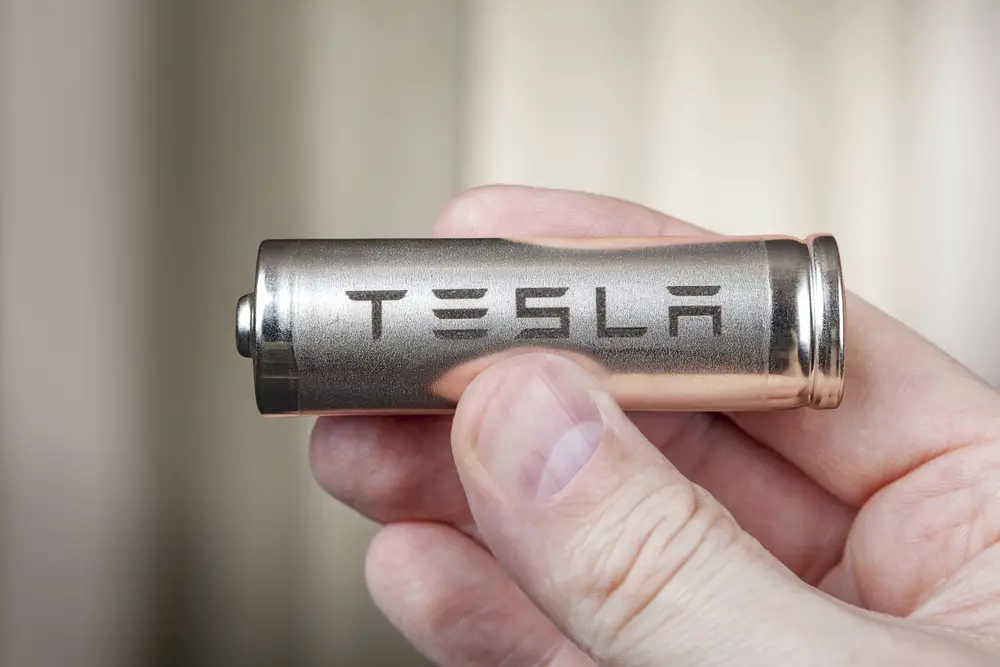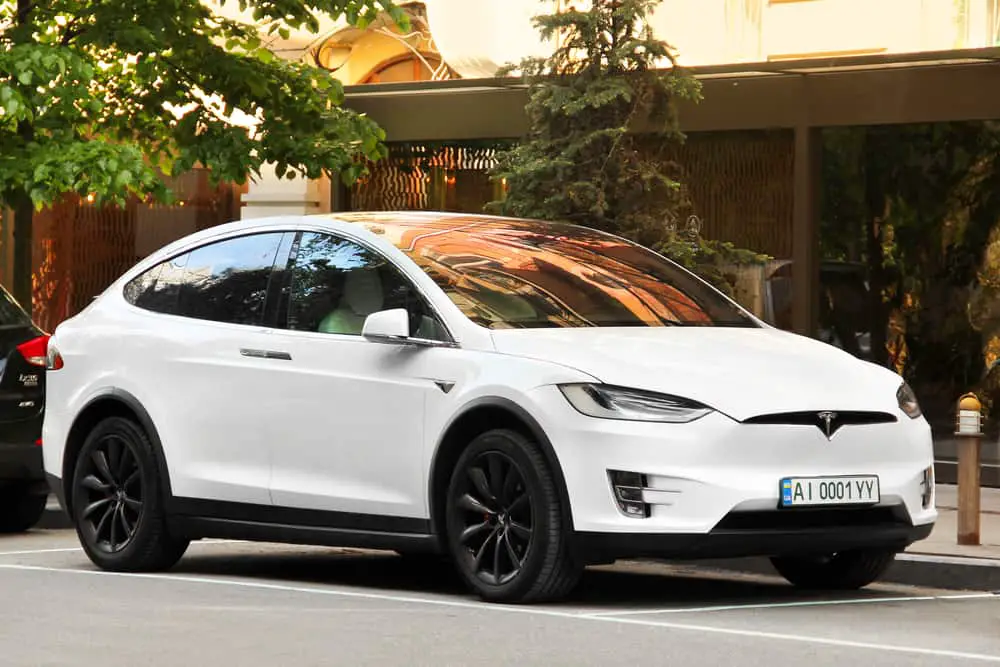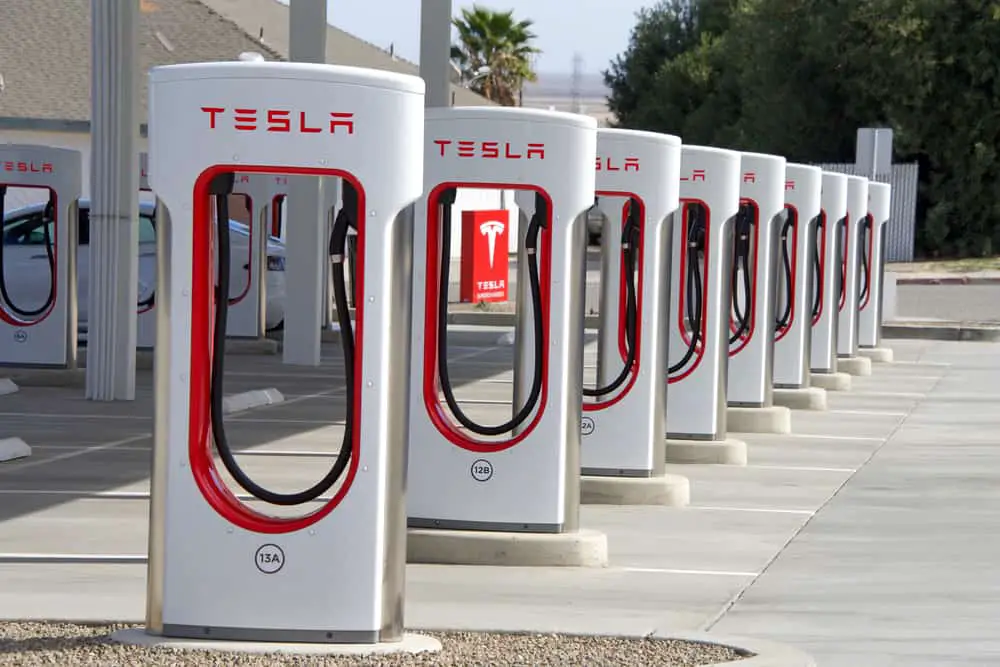As electric vehicles are becoming more popular, potential buyers often have questions about the lifespan and replacement frequency of components such as batteries.
Quick Answer:
Tesla’s batteries are designed to last between 300,000 to 500,000 miles, suggesting many years of driving before needing replacement. While performance may slightly degrade over time, most owners likely won’t need a battery replacement within the vehicle’s lifespan, though individual results can vary.
One of the major players in the EV market is Tesla, and understanding the battery life of their vehicles can be crucial for making an informed purchase decision.
In order to provide a reasonable expectation for their customers, Tesla offers a warranty on its battery packs, which can provide insight into the expected life of these essential components.
Tesla Battery Lifespan
Tesla is well-known for producing high-quality electric vehicles with long-lasting battery packs. The battery lifespan not only depends on the model but also on how well the owner maintains the vehicle. In general, Tesla batteries are designed to last between 300,000 to 500,000 miles.
Tesla has been continually improving its battery technology to provide extended ranges and longer lifespans. The Model S and Model X come with an 8-year or 150,000-mile warranty for the long-range battery, while the standard battery comes with an 8-year or 100,000-mile warranty.
The Model 3 and Model Y come with an 8-year or 120,000-mile warranty for their long-range batteries and an 8-year or 100,000-mile warranty for the standard battery.
While these warranties serve as a guarantee for the minimum lifespan, many Tesla owners experience significantly longer battery life. Factors like driving habits, frequent Supercharging, and weather conditions can impact the battery’s capacity and overall lifespan.
To ensure maximum battery lifespan, Tesla recommends following a few best practices:
- Regularly charging your battery between 20% and 80% to avoid stress on the battery.
- Limiting the use of Superchargers, charging at slower rates when possible.
- Avoiding parking the vehicle in extreme temperatures for extended periods.
Factors Affecting Battery Life
Driving Habits
Your driving habits can have a significant impact on the lifespan of your Tesla battery. If you consistently maintain moderate speeds and avoid aggressive acceleration or sudden braking, your battery can last longer.
Electric vehicles (EV) like Tesla rely on regenerative braking to help recharge the battery; hence, a smoother driving style can improve battery life.
Charging Behavior
Charging behavior also plays a critical role in the longevity of Tesla batteries. It’s essential to follow Tesla’s recommendations for charging practices, as it may vary depending on the specific model.
Generally, keeping your charge level between 20% and 80% prolongs battery life, though there are instances where a full charge is necessary for long trips.
When charging your EV, avoid relying exclusively on fast chargers (also known as Supercharging), as frequent usage could lead to increased battery degradation over time.
It’s advisable to utilize home charging options such as wall connectors or the mobile connector for regular charging needs, reserving Supercharging sessions for occasional use or longer road trips.
Battery Degradation and Range
Tesla batteries are designed to last a long time, but like all batteries, they do experience some degree of degradation over time. In this section, we will discuss battery degradation and how it affects the range of a Tesla vehicle.
Battery degradation refers to the gradual decrease in the battery’s capacity to hold a charge. This results in a reduction in the total distance a vehicle can travel on a single charge, also known as its range.
Several factors can influence the rate of degradation, including the number of charge cycles, ambient temperature, and driving habits.
Tesla uses lithium-ion batteries, which are known for their longevity and ability to maintain a high level of performance even after many charge cycles. According to Tesla, their batteries are designed to retain about 90% of their capacity after 200,000 miles, which is quite impressive when compared to other electric vehicles in the market.
However, it is important to note that individual experiences may vary. Some owners have reported minimal degradation, while others have seen a more significant decrease in range over time.
A few factors that can help minimize degradation include:
- Limiting the use of fast charging options like Superchargers, as they tend to generate more heat which can accelerate degradation.
- Charging the battery to a lower maximum capacity (e.g., 80% instead of 100%) for daily use and saving full charges for longer trips.
- Keeping the vehicle in a moderate temperature environment, as extreme temperatures can negatively impact the battery’s lifespan.
It is also worth mentioning that Tesla constantly works to improve their battery technology and performance, as evidenced by the introduction of new battery chemistries and pack designs over the years.
These advancements can help slow down the degradation process and increase the overall range of their vehicles.
Warranty and Replacement
Tesla Battery Warranty
Tesla offers an 8-year warranty for its battery packs in both the Model S and Model X, while the Model 3 Standard Range Plus comes with a standard 8-year/100,000-mile warranty. The Long Range and Performance versions of the Model 3 provide an extended 8-year/120,000-mile warranty.
The warranty covers battery degradation and any manufacturing defects that may affect the battery’s performance.
It’s important to note that the warranty does not cover damage resulting from accidents, improper use, or normal wear and tear. Tesla’s warranty ensures that if the battery’s capacity falls below a certain percentage within the warranty period, they will replace the battery at no cost to the owner.
For Model S and Model X, the threshold is 70% capacity, whereas, for Model 3 Long Range and Performance versions, it’s 80% capacity.
Battery Replacement Process
If you experience a battery issue within the warranty period, you should contact Tesla customer service or schedule an appointment at your nearest Tesla service center.
The expert technicians will run diagnostic tests to identify the issue and determine whether the battery is eligible for replacement under warranty. If it’s eligible, Tesla will replace the battery pack with a new or refurbished unit that matches or exceeds the original battery’s performance.
In case the battery is not covered by warranty or the warranty period has expired, you can purchase a replacement battery pack from Tesla, but the cost might be substantial. However, battery technology is evolving, and the prices are expected to decrease over time.
Maintenance and Service Recommendations
Regular Maintenance
It’s essential to maintain your Tesla battery to ensure optimal performance and longevity. Here are some general maintenance tasks you should perform:
- Rotate tires: Every 10,000 to 12,000 miles, rotating the tires will help even wear and extend their lifespan.
- Check brake fluid: Tesla recommends checking your brake fluid levels every two years or 25,000 miles, whichever comes first.
- Inspect brake calipers: Every 12,000 miles or 12 months, inspect the brake calipers for any signs of wear or damage.
- Replace cabin air filter: Change your cabin air filter every 2 years for the Standard Range and Standard Range Plus models and every 3 years for the Long Range and Performance models.
Scheduled Service Intervals
In addition to regular maintenance, here are some scheduled service intervals for key components of your Tesla battery:
- Battery Coolant Reservoir: Every 4 years or 50,000 miles, whichever comes first, replace the battery coolant reservoir. This should be done even if the coolant levels are within the normal range.
- A/C Desiccant Bag: Tesla recommends replacing the A/C desiccant bag every 4 years for the Standard Range and Standard Range Plus models and every 5 years for the Long Range and Performance models.
- High Voltage Battery: While the high voltage battery’s lifespan will vary based on use, Tesla offers an extensive warranty (8 years or 100,000 – 150,000 miles, depending on the model) for peace of mind.
Comparing Tesla Batteries with Other Electric Vehicles
Tesla batteries are known for their long life and impressive performance. In comparison to other electric vehicles (EVs), Tesla tends to outshine many of its competitors.
Let’s take a closer look at how Tesla batteries stack up against other EVs, particularly the Nissan Leaf.
Tesla offers different battery options for its various models, which can provide between 250 to 400 miles of range per charge.
For example, Tesla Model 3 comes with a standard 60 kWh battery, which offers a range of approximately 263 miles. On the other hand, the Nissan Leaf, one of the most popular electric vehicles worldwide, features a 62 kWh battery, with a range of up to 226 miles.
Battery performance between Tesla and other EVs varies due to some key factors. Tesla implements advanced thermal management systems, enhancing battery life and ensuring optimal temperature conditions during charging and driving. This aspect helps Tesla batteries last significantly longer than other EV batteries.
Moreover, Tesla frequently releases over-the-air software updates, which can immediately improve the efficiency and longevity of their batteries.
Battery degradation is an essential aspect to consider when comparing electric vehicles. While all batteries degrade over time, Tesla batteries have shown impressive durability.
Studies report that a typical Tesla battery may degrade only about 10% after 150,000 miles. Comparatively, Nissan Leaf batteries have a slightly higher degradation rate, with about 20% decline after 100,000 miles.
Advanced Battery Technologies
Tesla, under the leadership of Elon Musk, has been at the forefront of innovation in electric vehicle technology with their continued development and research into advanced battery technologies.
One of the primary components of Tesla vehicles is their lithium-ion batteries, which have been identified as a critical factor in improving electric vehicle performance.
The lithium-ion batteries used in Tesla vehicles have undergone continual improvements since the company’s inception. These advancements are focused on battery management systems, overall energy density, and various other factors that contribute to extending battery life and reducing degradation over time.
Battery management systems are essential for maintaining optimal performance and safety. Tesla’s battery management technology helps regulate factors such as charging and discharging rates, temperature management, and maintaining a balance between battery cells.
By effectively handling these components, the battery’s lifespan is prolonged, and the need for replacement can be drastically reduced.
The advancements in lithium-ion technology have also led to improved energy density in Tesla batteries.
Energy density refers to the amount of electricity that a battery can store relative to its size and weight. Tesla is focused on utilizing and developing advanced materials and design innovations that allow for their batteries to store more energy while maintaining a lightweight and compact form factor.
Charging Infrastructure
As electric vehicles (EVs) like Tesla continue to gain popularity, the availability and accessibility of charging stations become increasingly important. The charging infrastructure plays a crucial role in the overall battery life and replacement frequency of Tesla batteries.
Charging stations for Tesla vehicles are broadly categorized into two types: Tesla Superchargers and Destination Chargers. Superchargers provide fast, reliable charging, taking about 20 to 30 minutes to reach 80% battery capacity.
They’re strategically located near highways and popular routes, ensuring that Tesla owners can conveniently charge their vehicles during long trips.
Destination Chargers, on the other hand, are located at hotels, restaurants, and shopping centers. These chargers offer a slower charging experience compared to Superchargers but are perfect for topping off your battery while running errands or during overnight stays.
Tesla has been continuously expanding its charging infrastructure worldwide to accommodate the growing EV market.
Currently, there are over 25,000 Tesla Superchargers across more than 2,700 stations globally. This vast network of charging stations ensures that Tesla owners can easily plan their trips and charge their vehicles along the way.
Furthermore, Tesla vehicles are also compatible with third-party charging stations, offering additional convenience and flexibility. It is important to note that using non-Tesla chargers may result in slower charging speeds, depending on the charger’s power output.
To make charging even more accessible, Tesla offers home charging solutions, allowing owners to charge their vehicles overnight using a Level 1 or Level 2 charger installed in their garage or driveway.
Level 2 chargers provide a quicker charging experience compared to standard wall outlets and can fully recharge a Tesla battery overnight.
Conclusion
Tesla batteries are designed to provide a long-lasting and low-maintenance experience for their owners.
On average, Tesla batteries are expected to retain about 70-90% of their capacity after 8 years or 100,000 miles. This makes them a reliable choice compared to traditional gas-powered cars, which often require more frequent maintenance and replacements of various components.




